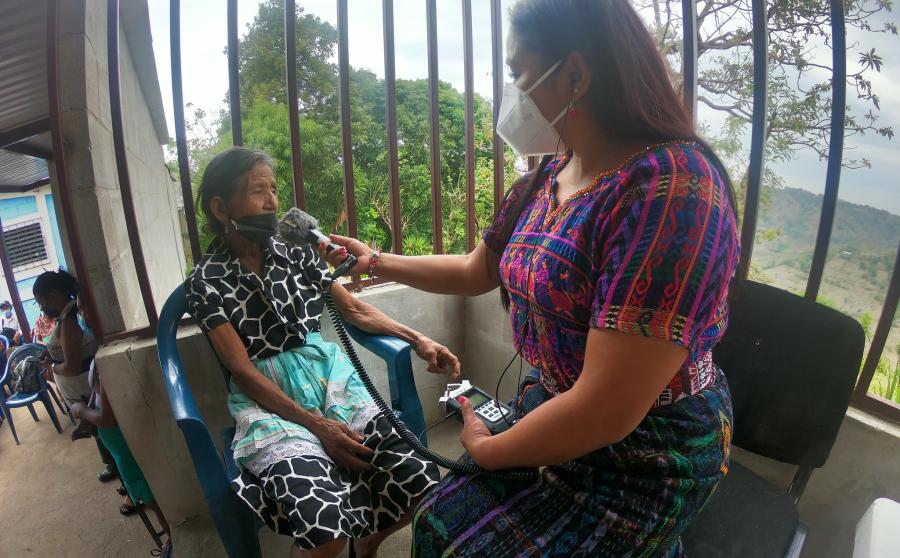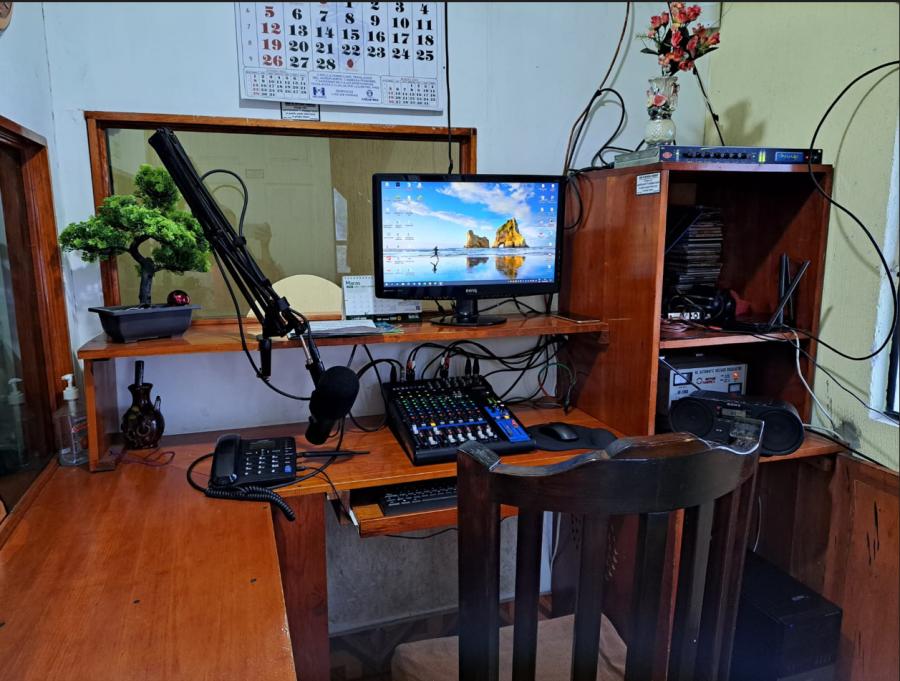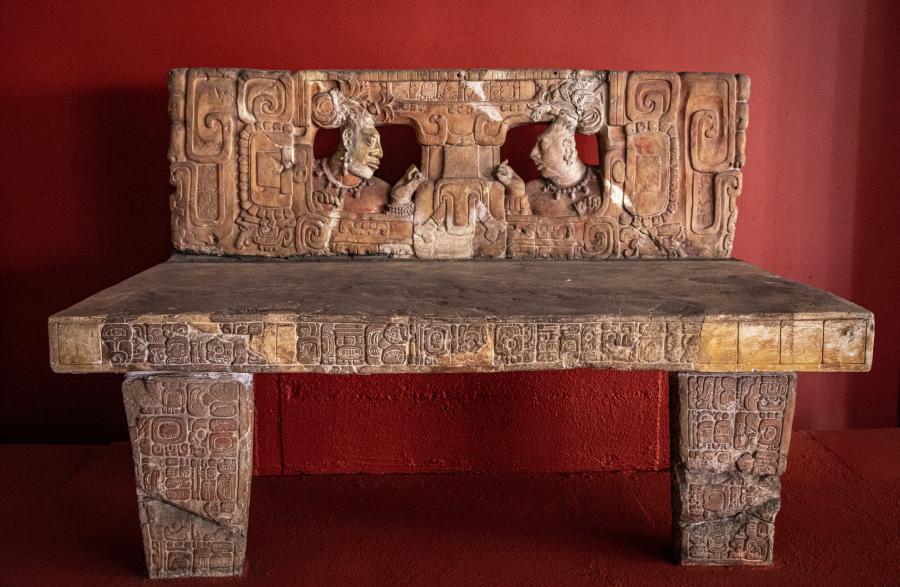The line that ethnographers draw across Central America to mark the division between Mesoamerican Indians and those of South American and Caribbean origin passes right through the middle of the Republic of Honduras. In comparison with its neighboring Guatemala, only remnants of indigenous Indian culture survive in present-day Honduras; 90 percent or more of its population is Mestizo or Ladino. The Lenca of the Department of Lempira in the western part of Honduras and the Chortí of Copán are the two largest Indian groups that have managed to preserve certain unique cultural and racial characteristics, despite the fact that both have been largely assimilated into the dominant, Spanish-speaking Ladino culture and economy.
A small, isolated settlement of Jicaque Indians lives with their language and culture intact on Montaña de la Flor in the Department of Francisco Morazán. In 1988, their plight came to the attention of the Honduran media. Theirs was an old story: the Indians claimed that Ladinos were taking their lands and resources without permission or compensation.
Numerous Jicaque settlements in the neighboring Department of Yoro possess titles to agricultural lands granted by the Honduran government dating as far back as 1864. In the years since, Ladinos have usurped their lands with the indifference or even collusion of government officials, who themselves are Ladino. The Jicaque of Subirana, Yoro, for example, have been dispossessed of 97.5 percent of their land, usually by force or invasion.
"A Forgotten People"
Distant relatives of the Jicaque, the Pesch Indians are also victims of neglect, at best, and at worst blatant subjugation by the Ladino society that envelops them. At the time of Columbus, the Pesch, known in Honduras and the anthropological literature as the Paya, are believed to have lived across as much as one-fourth of the country, more than any other aboriginal group. They have since been reduced to living on a tiny fraction of that area, surviving only in the vicinity of the town Dulce Nombre de Culmí in the Department of Olancho and in scattered settlements in the neighboring departments of Colón and Gracias a Dios.
Like the Jicaque, the Pesch of Olancho received legal title to their lands in 1864. Like the Jicaque, they too have gradually lost much of these lands to Ladinos. Whereas the Indians had practiced subsistence agriculture, the newcomers have converted large areas to cattle grazing and to cash crops such as coffee. Unable to feed themselves on what remains, many Indians must labor for wages under the Ladinos.
In 1971, members of the Pesch and Jicaque united to press their land claims before the Honduran government's Institute Nacional Agraria, the agency charged with carrying out land reform in the country. To date they have had little success in recuperating land to which they are legally and morally entitled. If anything, the situation has worsened, and new conflicts are brewing, given population growth pressures and the failure of agrarian reform in general to challenge the largest and most powerful landowners in the country.
In 1978, a number of groups united to form the National Federation of Tribes for the Liberation of the Honduran Indian (Fenatrilih). Fenatrilih continues the struggle to regain usurped lands, as well as to obtain credit and technical assistance to increase agricultural output and, in general, improve the social, economic, and political situation of Indians in Honduras. In 1988, with the support and participation of the Honduran government, the Pesch and other Honduran Indians began to discuss ways in which they could preserve what is left of their cultures and languages. However, one cannot be particularly optimistic about these efforts, however well-intentioned, given the tremendous social and economic forces working to obliterate anything that is distinctly Indian.
Documentation of the Pesch is scant. Estimates as to the size of their pre-Columbian population are seemingly unavailable. In 1925, some 600 Pesch were counted, and more recent figures range from between 500 and 1,200, although a precise count is confounded by extensive mixing over the years between Pesch and Miskitos, and more recently, Ladinos. The number of "genetically pure" Pesch is much lower. A 1982 report listed just 17, all living along the banks of the Río Plátano in the Department of Gracias a Dios, in that isolated region along the Caribbean coast of Honduras and Nicaragua known as the Mosquitia.
Linguists generally believe the Pesch language to be derived from the Chibchan family of languages with origins in northern Ecuador and Colombia. Today this language, along with the knowledge and some of the tools associated with subsistence hunting, fishing, and cultivation, are all that remain of early Pesch culture. The Pesch and neighboring Indian groups have been described as "a deculturated series of peoples, broken down under conquest and colonization". Bark breechcloths have been replaced with machine-made, cloth shorts, and their own religion with Christianity. But although .22-caliber rifles have supplanted blowguns, the keen skills necessary to catch iguanas barehanded and spear fish with hand-held harpoons endure. And the remaining Pesch who still live along rivers are superb boat-handlers, maneuvering dugout canoes deftly up and downstream through boulder-strewn rapids.
The handful of Pesch who live in Las Marias, a mixed Pesch-Miskito Indian village lining the banks of the Río Plátano, in the remotest region of the Honduran Mosquitia, still carry on the subsistence lifestyles reminiscent of their forebears. They cultivate small, shifting plots of rice, cassava, beans, and corn in clearings hacked from the rain forest along the river. They regularly hunt such game animals as deer, monkeys, wild pigs, wild turkeys, iguanas, and the massive tapir that abound in the still-undisturbed forests that cloak this region. The Río Plátano supplies the fish that the Pesch and Miskito adeptly spear from their canoes with handheld harpoons, or underwater with homemade spearguns. The coveted cuyamel, a large fish in danger of extinction elsewhere in Honduras, is a favorite catch. With such a healthy diet, the residents of Las Marias do not display the signs of malnutrition so widespread among the rural Ladino population of Honduras.
Nevertheless, as an isolated, subsistence-based community, the people of Las Marias suffer from appallingly high rates of gastrointestinal ailments and malaria, among other medical problems.
A Sanctuary Besieged
In 1980, the government of Honduras and UNESCO jointly recognized the Río Plátano as a biosphere reserve, the first such reserve established in Central America. Two years later it was also designated a World Heritage Site. Offering refuge to numerous species of plants and animals increasingly beleaguered throughout Central America is one goal of this 390,000-ha tract; another is protecting the indigenous populations of Pesch and Miskito Indians who have dwelt in the area and used its resources without destroying them for centuries. A third objective is protecting the Plátano's abundant archaeological resources, which have been explored and studied very little to date. The World Wildlife Fund and US AID have tunneled tens of thousands of dollars into public and private Honduran agencies for the development and management of this reserve; organizations such as UNESCO, CATIE (the Centro Agronómico Tropical de Investigación y Enseñanza, in Costa Rica), and World Neighbors have provided some technical support.
Unfortunately, the enthusiasm of these international organizations has not been matched by the active commitment of the Honduran government. Throughout this decade, ominous reports have filtered back periodically to the capital of Tegucigalpa from the Olancho-Mosquitia frontier. They spoke of unchecked penetration by logging roads into the biosphere reserve's buffer zone as well as its core area (supposedly inviolate) and massive immigration of Ladino campesinos from the heavily populated, drought-stricken southern parts of Honduras to the sparsely populated tierras virgenes (virgin lands) in the vicinity of the Río Plátano Biosphere Reserve.
The most powerful family in the Department of Olancho, the Zelayas - one with a history of violence against would-be land reformers - was behind the logging road construction. Mahogany and other tropical hardwoods that command premium prices as export commodities were luring them deeper into the jungle, ever closer to indigenous habitants. In their wake followed land-hungry campesinos, bringing with them their tradition of destructive slash-and-burn agriculture. These desperate people were settling and clearing any patch of unclaimed forest. The Honduran government apparently lacked the resolve or the interest to deal with either the logging or unauthorized settlement.
To investigate these grim tidings, a private, nonprofit Honduran organization named Mopawi mounted an expedition to the Río Plátano Biosphere Reserve in March 1988. Mopawi promotes grassroots, integrated development among the four indigenous peoples of the Honduran Mosquitia. Representatives of three of these four groups - Pesch, Miskito, and Garífuna - joined the expedition to see for themselves what was happening to the headwaters of the watershed they all live in and depend upon.
What they saw was extremely disquieting. A post marking the boundary of the biosphere reserve had been defaced; what just a year earlier had been primary forest around it was now chopped down. Shortly thereafter, expedition members observed a logging truck hauling three massive mahogany logs out of the reserve; bosses of the logging company were conspicuous, with holsters and sidearms. Whole families of Ladinos walked along the road, moving into the reserve. Most of the campesinos encountered who had already cleared forest and planted crops had lived in the area only a year or two. It was learned that in the five years since the logging road first penetrated this territory, an estimated 8,000 immigrants had already settled there. Allen Rivens, a Miskito who had passed through the same area seven years earlier, was left very dismayed by how much it had changed - the clear-cutting had penetrated the heart of the biosphere reserve in so short a time.
It was clear from conversations with the Ladino settlers as well as through general observations that a virtual slaughter of the area's wildlife was in progress. Animals such as deer were being shot because they were edible; still others, such as jaguars, because they were a menace to livestock and children. The expedition members also observed Ladinos fishing for the coveted cuyamel with dynamite, an indiscriminate, destructive method all too common in Honduras. It was no surprise to hear los dinamiteros complain that fish were growing scarce after just a few years. In striking contrast, the reserve's indigenous residents have successfully exploited the fishery for centuries using their traditional selective methods, without diminishing fish stocks.
Back home in Las Marias, Pesch representative Obence Ramos observed at the conclusion of the expedition that he was convinced that indigenous residents of the Plátano should quickly seek legal title to land they had always simply regarded as their own because there was no one else who used or claimed it. "Our people have been sleeping tranquilly, and we say, 'this land is mine.' But why? We have done nothing to be able to say it is ours. If we want to possess our land, we must receive title to our properties, and then we can say it is ours."
Unfortunately, the bitter experience of Ramos' fellow Pesch in Olancho is testimony that merely possessing title to land is no guarantee that it will remain yours if you are poor, and Indian, in a country that, like most, has trampled on the rights of its indigenous people for centuries. Be that as it may, Ramos and other Pesch are determined to save not only what is left of their land but what is left of their culture.
Article copyright Cultural Survival, Inc.




